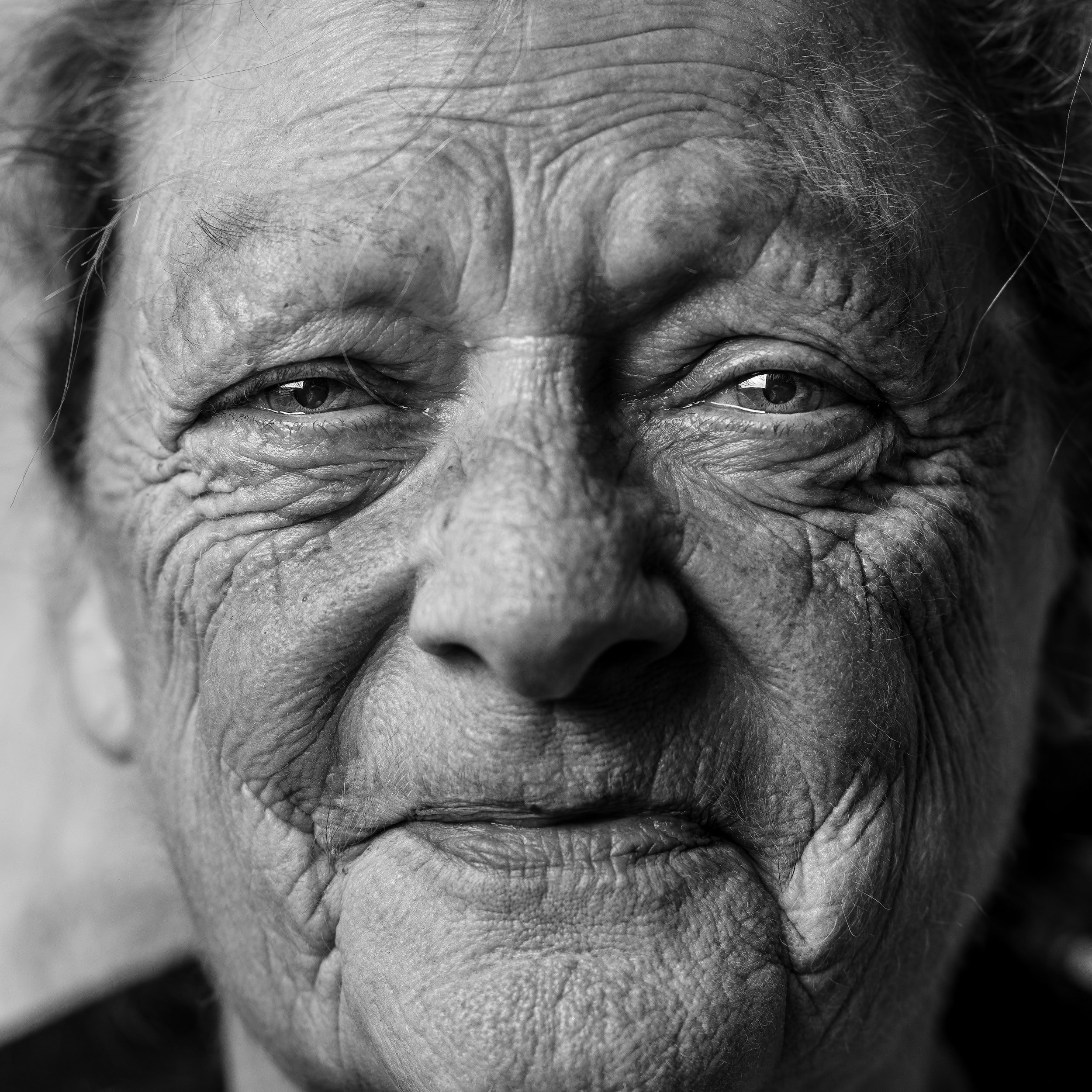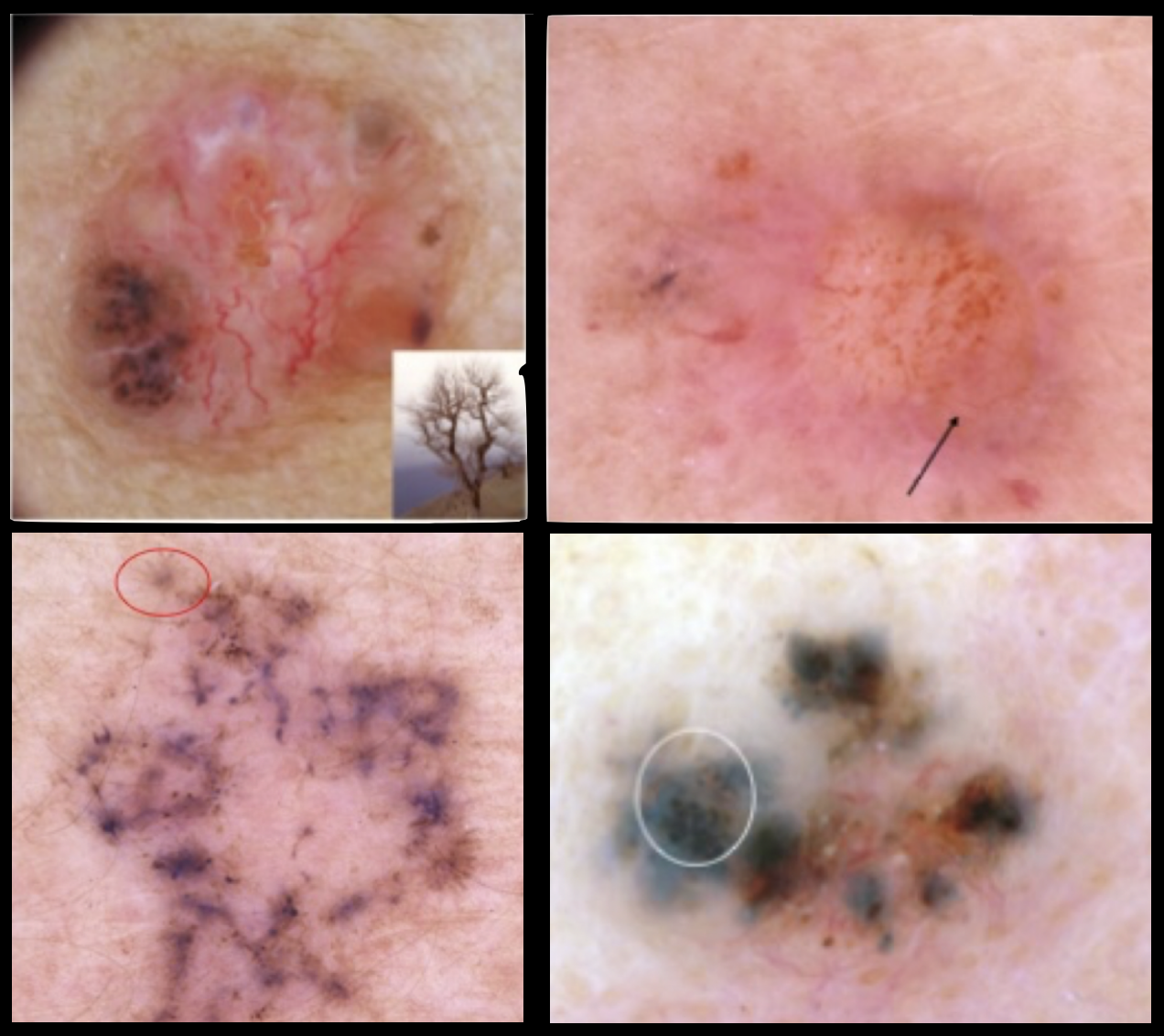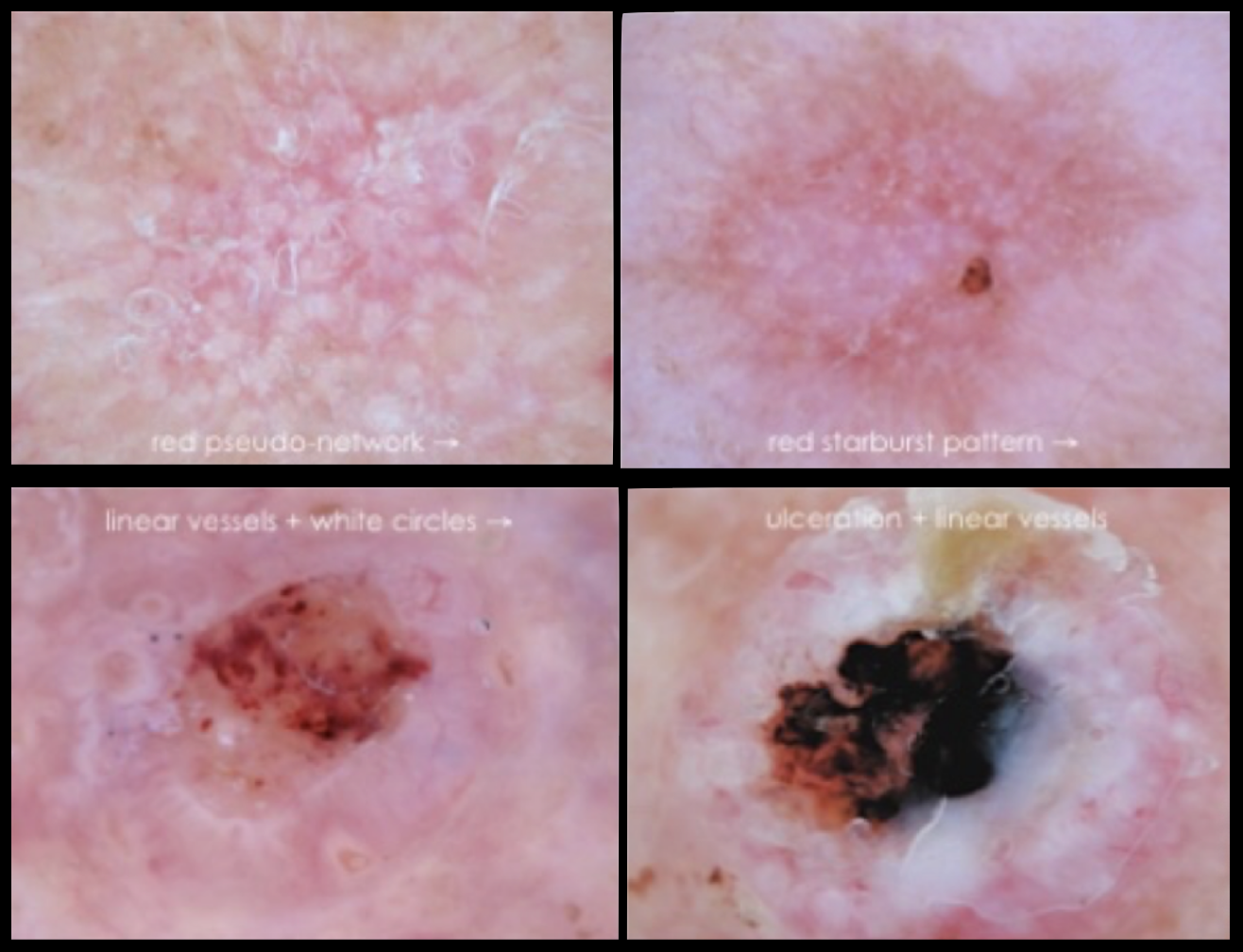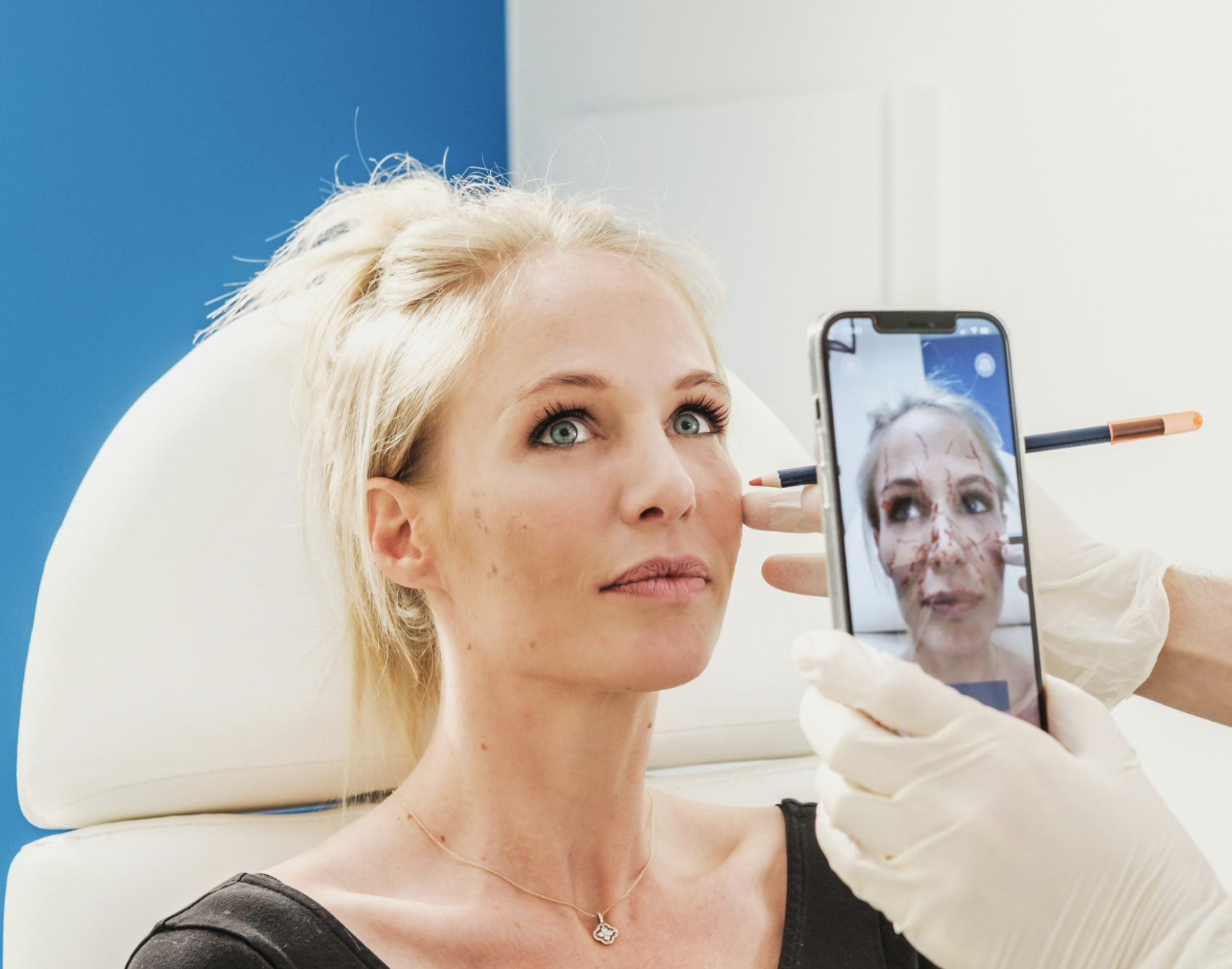Skin tumours
Get your skin checked
Skin lesions may come in all shapes and forms. They can be benign or malignant. A benign lesion may be a naevus, a fibroma, a cyst, a lipoma, a vascular malformation, and so on. A malignant lesion usually classifies as a basocellular carcinoma (BCC), a spinocellular carcinoma (SCC) or a melanoma.
In most cases, we can identify which type of lesion it is, just through a clinical investigation. Sometimes it is not so clear and then a biopsy or excision is necessary. In case of a benign lesion, the most frequent request for removal is for aesthetic purposes. If we are dealing with a malignant lesion, then complete removal is a must.
The essentials
A facial lesion may be benign or malign. The most common malign lesions are a basocellular carcinoma (BCC), a spinocellular carcinoma (SCC) or a melanoma.
Be aware of the following signs that may point towards a malignant lesion: fast growing - irregular borders - crusty or bleeding - different colours - pearly or waxy appearance - changing in the appearance
The diagnosis of a malign lesion is usually done by a dermatologist. The excision and reconstruction can be done by a plastic surgeon if you aim for the best aesthetic and reconstructive outcome.
How can you know if your lesion is malignant ?
It is not always easy to determine by yourself if a lesion is benign or malignant. I highly recommend to get a yearly check-up with your dermatologist so any malignant lesion can be diagnosed early. Fortunately, most lesions grow quite slow, so a regular check-up is usually enough to treat most malignant lesions without too much trouble. There are of course exceptions for which a consultation and treatment on the short term are necessary.
If you have a lesion with one of the following characteristics or aspects, I advise you to contact your dermatologist for a more in-depth diagnosis:
A fast growing lesion that you haven't noticed before
Irregular or unclear borders
A crusty appearance or easily bleeding
Different colour aspects within the same lesion
A pearly or wax appearance
Any lesion that changes in appearance over several weeks
These are the most important signs that a lesion might be or is evolving into a malignant skin tumour. In any case, if you have any doubt about a lesion you may have, I recommend you to get it checked with your dermatologist. If an excision is necessary, then you are welcome at my office. Most excisions happen under local anaesthesia with minimal downtime .
Typical aspects of a Basocellular Carcinoma (BCC)
Typical aspects of a Spinocellular Carcinoma (SCC)
Typical aspects of a melanoma
Why should I visit a plastic surgeon for my facial lesion ?
Several specialties are qualified to excise small lesions of the face or on any other body part. In the face especially, the aesthetics matter. Every scar, even the smallest one, may be visible and should therefor be placed as inconspicuous as possible. As a plastic surgeon, I was trained to combine reconstructive treatments with aesthetic outcomes. I want to make sure that the lesion is completely removed, but I want to give you either the smallest scar possible or the best reconstructive options that restores the facial contours and aesthetics. In my opinion, the reasons to visit a plastic surgeon for a facial lesion are the following:
Tactical placement of the scar in a natural groove or wrinkle, whenever possible.
The most meticulous tissue handling and skin closure.
The ability to solve certain defects with creative solutions, such as mobilising local tissues or creating a flap to cover the defect.
The ability to remove lesions, while keeping facial expressions and skin mobility unchanged.
Clear knowledge on the necessary treatments for malignant lesions to minimise the risk of relapse.
Thorough knowledge on the post-operative care and scar treatment to have the thinnest, most invisible scar possible.
The ability to excise and reconstruct most lesions under local anaesthesia with minimal downtime.
Combine the best functional and aesthetic outcome for optimal patient satisfaction.
If you have been diagnosed with a malignant skin cancer or you are bothered by a facial lesion, I recommend you to plan a consultation so we can offer you the best combination of reconstructive surgery with aesthetic outcomes.













